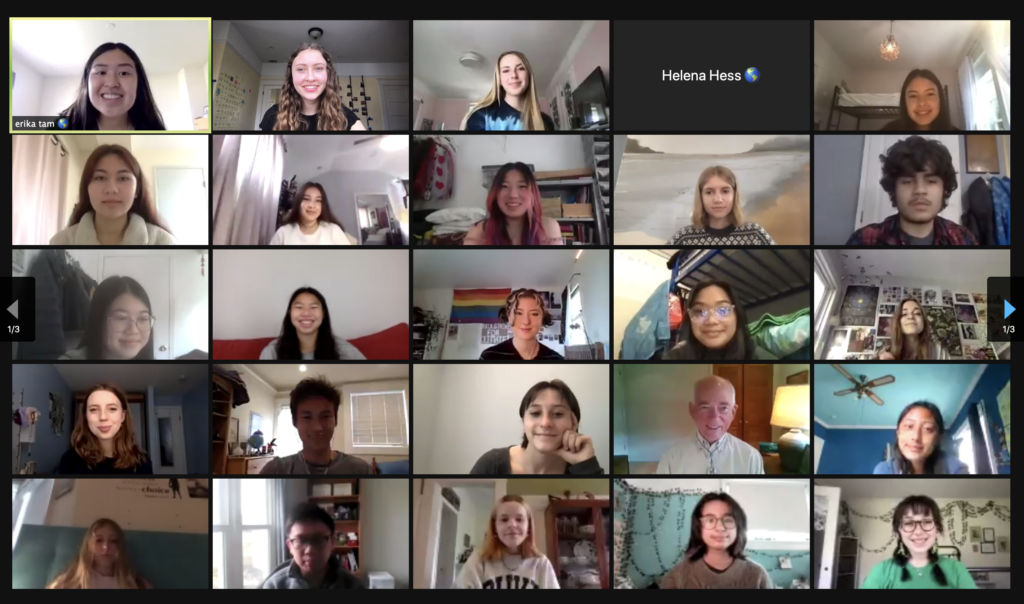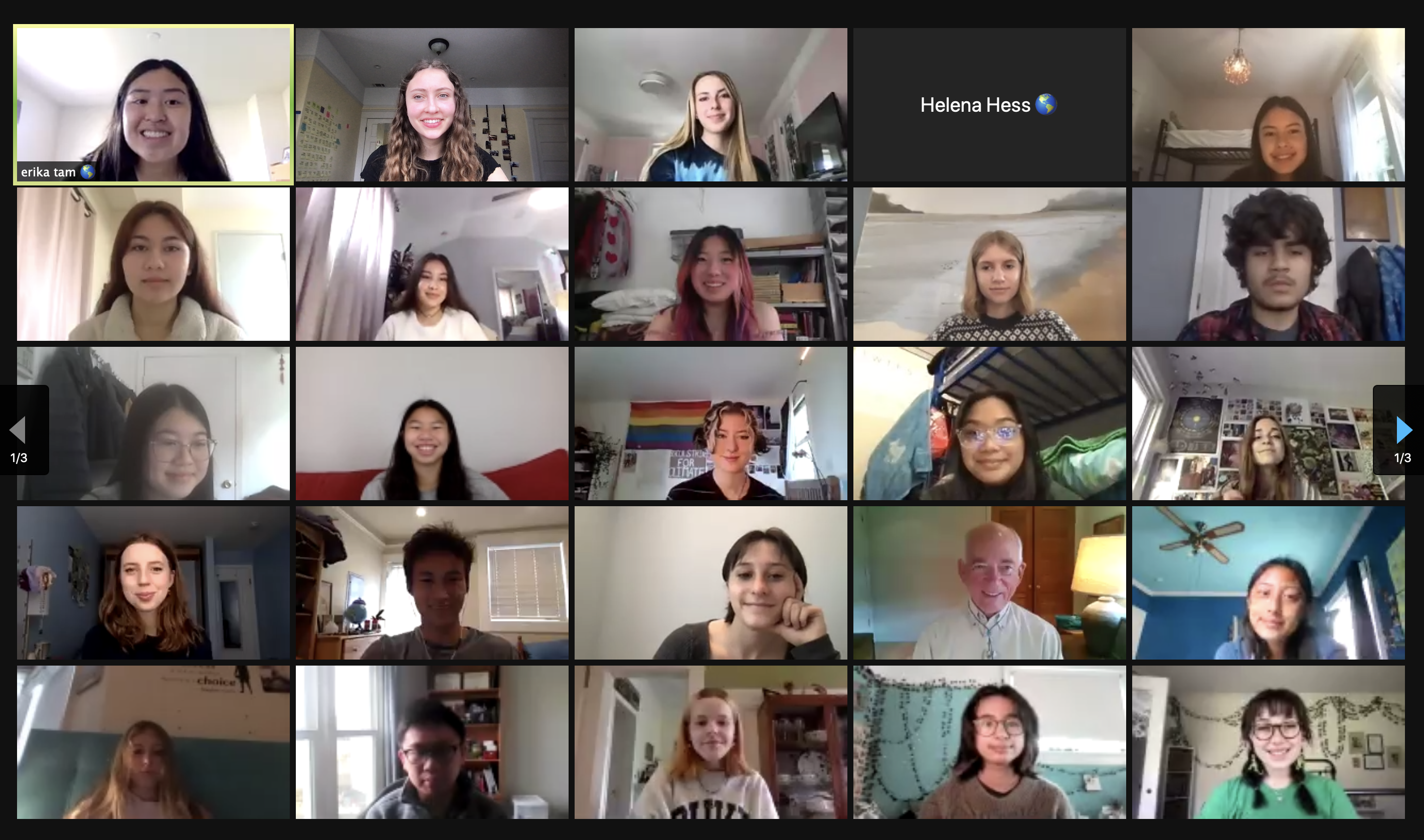
Photo by Amelia Fortgang
Over 50 students from across the world joined the Bay Area Youth Climate Summit (BAYCS) for an Earth Day Summit on April 24 which focused on policies and actions meant to combat climate change.
Amelia Fortgang ’22 had the idea to start the BAYCS after attending the virtual Bronx Youth Climate Summit last summer.
“Once the pandemic hit, I was really looking for ways to make virtual activism just as impactful as in-person actions, like going to a march or a strike,” Fortgang said. “I attended a virtual youth climate summit and I thought it was a great way to bring high school students together to rally around the issue of climate change.”
Fortgang, a leader of LWHS’ Environmental Club, discussed the possibilities of hosting a climate summit in the Bay Area with other members of the Environmental Club. They began contacting environmental clubs at various schools in the Bay Area, such as Sacred Heart and Lowell, to form the BAYCS Youth Advisory Council.
Last fall, BAYCS hosted its first youth climate summit. They offered a morning and afternoon session where participants could choose from a variety of workshops to attend. Hundreds of students from across the world attended the virtual workshop to learn more about the environment and climate justice.
This year, BAYCS wanted to host a climate summit for Earth Day in order to bring more awareness to the environmental issues faced by the planet.
The Youth Advisory Council, composed of 30 high schoolers from the Bay Area, met monthly to plan the event. The team was divided into several groups, including a social media team and a logistics team. Ten members of the Youth Advisory Council composed a core team that met weekly to organize and oversee the event.
Unlike with their first summit, the team decided to highlight themes for their Earth Day event. All of the morning workshops focused on policy, while the afternoon workshops focused on action.
“I’ve noticed that a lot of the conversations around Earth Day are usually focused around smaller, individual actions, and while those are impactful, what really will be helpful in the long-run is policy and larger-scale organizational actions,” Fortgang said. “So, we wanted to provide a way for high schoolers to commit to learning more about and contributing to long-term change.”
After deciding on a theme, Youth Advisory Council members reached out to presenters who could address environmental policy — such as the Green New Deal or carbon taxes — or action, such as food justice or planting more trees.
BAYCS received feedback from their first climate summit about how participants appreciated the relationships they made with other people from across the world who were passionate about climate change. The group wanted to ensure that this time around, there was plenty of time for interactive activities and discussions where people could network. Throughout the summit, which took place over Zoom, students dropped links in the chat to resources and petitions about the climate crisis that needed more involvement.
The Earth Day Summit also offered lunchtime discussions in the form of debates. There were various topics including the ethics of GMOs, whether the pandemic was good or bad for the environment and if priorities should be focused on reducing emissions or plastic waste.
“It was really cool hearing other people’s experiences and getting to hear different perspectives,” said Erika Tam ’22, an attendee and member of the Youth Advisory Council. “A lot of people had a lot of different opinions about topics related to the environment, and I just got to know the people who attended the summit better.”
In addition to hosting these summits, BAYCS also emphasizes the impacts that individuals can have in their communities. After the workshops, students worked on creating Climate Action Plans (CAPs). CAPs are projects meant to tackle climate change within the local community.
At the Earth Day summit, students presented on three successful CAPs they had been working on since the previous BAYCS. This included the installation of air quality sensors at schools in San Bruno, holding a used clothing swap and bringing TerraCycle, a company that collects and recycles materials to be made into new products, to a school to dispose of waste.
Members from the San Francisco Department of the Environment, which seeks to reduce greenhouse gas emissions and advance climate protections, worked with the Youth Advisory Council to set up CAP workshops. They guided students with brainstorming new, feasible plans to help combat climate injustices within their communities. BAYCS will keep in touch and assist with CAPs as people begin to act on their plans.
BAYCS hopes to continue organizing summits biannually, once each fall and again on Earth Day. Their next summit is planned to mark the anniversary of their first summit, in September 2021. While they expect this summit to be virtual, BAYCS hopes that their Earth Day Summit in 2022 will be in-person, though they want to figure out how to incorporate virtual elements so that people who are not residents of the Bay Area can still attend. This way, students can still learn about worldwide perspectives on environmental issues.
In the meantime, BAYCS will continue to educate the Bay Area community by hosting monthly workshops about the environment and spreading awareness about the climate crisis.







